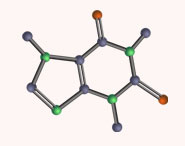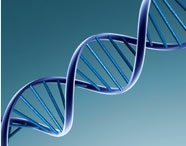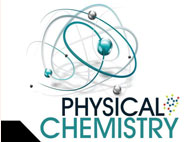


 علم الكيمياء
علم الكيمياء 
 الكيمياء التحليلية
الكيمياء التحليلية 
 الكيمياء الحياتية
الكيمياء الحياتية 
 الكيمياء العضوية
الكيمياء العضوية 
 الكيمياء الفيزيائية
الكيمياء الفيزيائية
 الكيمياء اللاعضوية
الكيمياء اللاعضوية 
 مواضيع اخرى في الكيمياء
مواضيع اخرى في الكيمياء
 الكيمياء الصناعية
الكيمياء الصناعية |
أقرأ أيضاً
التاريخ: 3-12-2015
التاريخ: 20-12-2015
التاريخ: 2025-05-05
التاريخ: 11-9-2019
|
Looking back at the equilibrium set up when acetic acid dissolves in water, but drawing the mechanism of the back reaction, we see acetate ion acting as a base and H3O+ acting as an acid. In all equilibria involving just proton transfer a species acting as a base on one side acts as an acid on the other. We describe H3O+ as the conjugate acid of water and water as the conjugate base of H3O+. In the same way, acetic acid is the conjugate acid of acetate ion and acetate ion is the conjugate base of acetic acid.
●For any acid and any base:
AH is an acid and A− is its conjugate base and B is a base and BH+ is its conjugate acid. That is, every acid has a conjugate base associated with it and every base has a conjugate acid associated with it.
Water doesn’t have to be one of the participants—if we replace water in the reaction we have been discussing with ammonia, we now have ammonia as the conjugate base of NH4 + (the ammo-nium cation) and the ammonium cation as the conjugate acid of ammonia. What is different is the position of equilibrium: ammonia is more basic than water and now the equilibrium will be well over to the right. As you will see, pKa will help us assess where equilibria like these lie.
The amino acids you met in Chapter 2 have carboxylic acid and amine functional groups within the same molecule. When dissolved in water, they transfer a proton from the CO2H group to the NH2 group and form a zwitterion. This German term describes a double ion having positive and negative charges in the same molecule.



|
|
|
|
لشعر لامع وكثيف وصحي.. وصفة تكشف "سرا آسيويا" قديما
|
|
|
|
|
|
|
كيفية الحفاظ على فرامل السيارة لضمان الأمان المثالي
|
|
|
|
|
|
|
جامعة الكفيل تطلق الامتحانات النهائية لطلبتها
|
|
|